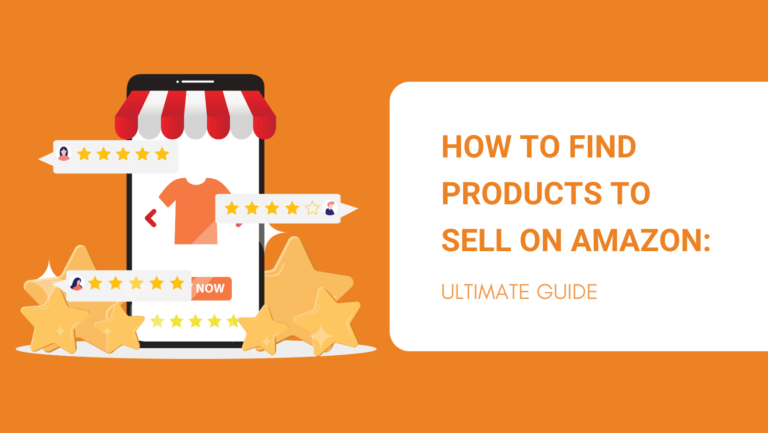Selling on Amazon can be lucrative, but it begins with finding the right products to sell. Identifying products with high demand, low competition, and a reasonable profit margin is crucial for success on this platform.
In this guide, you will discover practical strategies to identify profitable products, explore product research tools, and understand how to evaluate competition and demand.
By leveraging these techniques, you can uncover products that not only meet market needs but also maximize your profitability.
Stay tuned as we delve into actionable steps for finding your next big seller!
Key Takeaways
- Leverage product research tools to find high-demand, low-competition items.
- Browse the Amazon Best Sellers page for trending products.
- Evaluate competitors’ reviews to identify gaps and opportunities.
How to Find Products to Sell on Amazon

1. Use Product Research Tools for Keyword Research
Keyword research plays a crucial role in identifying popular products to sell on Amazon. By understanding what customers are searching for, you can tailor your product listings to match their preferences and increase visibility.
Use tools like Helium 10 to gather comprehensive keyword data. This tool provides insights into high-volume and highly relevant keywords. It even offers a free keyword research tool in collaboration with Influencer Marketing Hub.
Jungle Scout is another powerful tool for keyword research. It allows you to segment information by geography, making it easier to target specific markets.
You can use Jungle Scout to find estimated search volumes for various keywords and related phrases
AMZScout helps Amazon sellers identify unmet customer demand by monitoring weekly trends in customer search patterns. This makes it easier to spot new opportunities for products or offers .
Quick Tips:
- Helium 10: Find high-volume keywords and discover relevant opportunities.
- Jungle Scout: Segment data by geography and understand search volumes.
- AMZScout: Identify trends and unmet customer demands.
By using these tools, your Amazon product listings will align better with customer searches, helping you to drive traffic and sales.
2. Browse the Amazon Best Sellers Page
Browsing the Amazon Best Sellers page is a great way to find high-demand products. This list includes the most popular items based on sales and isupdated hourly. By checking this page, you can gaininsights into current trends and consumer preferences.
Steps to Use the Best Sellers Page:
- Access the page: Navigate to the Amazon Best Sellers page.
- Select a category: Choose a category that aligns with your interests or niche.
- Explore subcategories: Click through the subcategories to narrow your search and find more targeted products.
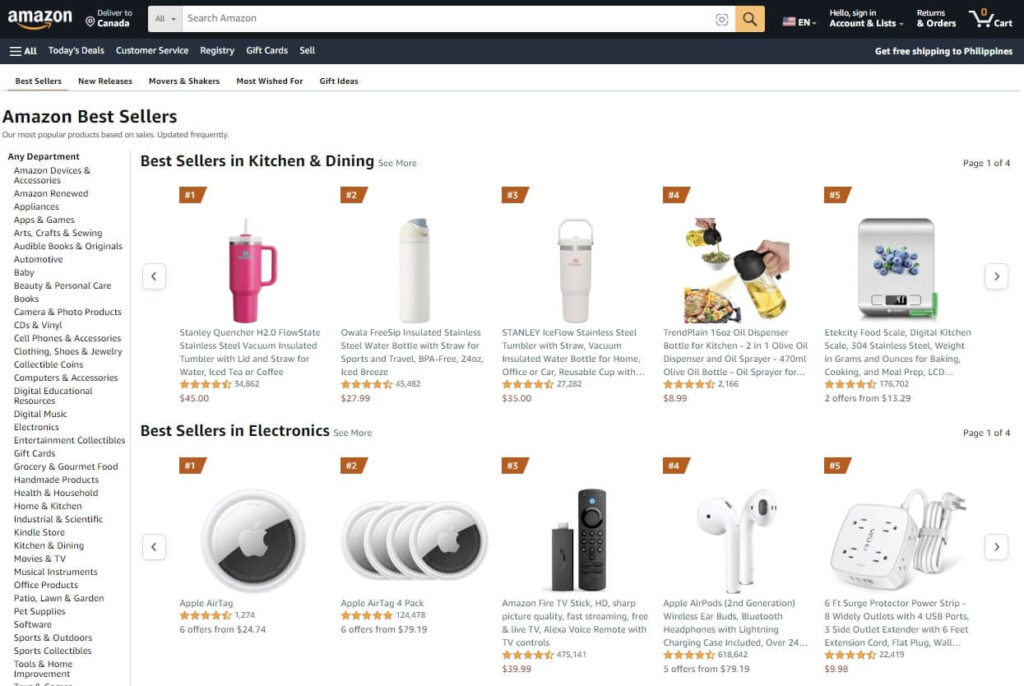
Monitoring this page helps you stay updated on trending products like the Stanley Quencher in Home & Kitchen. This tumbler has gained popularity due to social media influencers and features double-wall vacuum insulation.
Analyzing Categories and Subcategories:
- Identify top-performing items: Look for products that consistently remain in the top spots.
- Evaluate demand: High-ranking items usually indicate strong consumer demand.
- Observe product features: Note common features in best-selling products to understand what customers value.
Tips
- Check frequently: Since the list updates hourly, regular visits ensure up-to-date information.
- Track changes: Note any new entries and shifts in rankings to spot emerging trends.
3. Collaborate with a Product Sourcing Agent
Working with a product sourcing agent can streamline your path to finding profitable products for Amazon. These agents are experts who can help identify unique products that you might not find on your own.
Benefits of Using a Sourcing Agent
- Access to Unique Products: Sourcing agents have connections with various suppliers and manufacturers, giving you access to unique products not easily found online.
- Quality Control: They conduct quality checks to ensure products meet your standards, reducing the risk of receiving low-quality items.
- Supplier Negotiations: Sourcing agents can negotiate better prices and terms, leveraging their relationships with suppliers.
Here are a few more benefits of working with a sourcing agent:
- Time-Saving: Sourcing agents handle the entire process, saving you significant time and effort.
- Expert Insight: With their industry knowledge, they can advise on trends and profitable niches.
- Compliance Assistance: They help ensure that products meet legal and regulatory requirements, which is crucial for selling on platforms like Amazon.
Things to Consider
- Reputation: Only work with reputable sourcing agents. You can find recommendations and reviews on industry blogs or eCommerce forums.
- Services Offered: Look for agents who offer a range of services, including product development, branding, and shipping. For example, Niche offers dropshipping, order fulfillment, and worldwide shipping
- Cost: Sourcing agents typically charge a fee for their services. Ensure you understand their pricing structure and what is included.

In essence, collaborating with a product sourcing agent can significantly enhance your ability to find profitable products for Amazon. Doing so can streamline your operations, ensure product quality, and ultimately lead to higher profits.
4. Google to Find Suppliers for Your Products
Using Google to find suppliers can be simple and effective. Start by using specific keywords related to your product. For example, search for “wholesale [product name]” or “[product name] suppliers.” Be as specific as possible to filter out irrelevant results.
To evaluate suppliers, look at their websites. Reputable suppliers usually have professional, easy-to-navigate sites.
Read through their About Us page to understand their history and mission. Check if they list their certifications or memberships in industry associations.
Comparing several suppliers can help you make an informed decision. Create a table to compare important factors:
| Supplier Name | Minimum Order Quantity | Payment Terms | Shipping Time | Customer Reviews |
| Supplier A | 100 units | Net 30 | 7-10 days | Positive |
| Supplier B | 200 units | Prepaid | 5-7 days | Mixed |
| Supplier C | 50 units | Credit Card | 10-14 days | Mostly Positive |
Vetting suppliers is crucial. Look for reviews on sites like Trustpilot or the Better Business Bureau. Check for any complaints and see how the supplier responds to negative feedback.
Positive reviews can indicate reliability, but watch out for patterns in negative reviews.
Transition to industry guides to deepen your understanding. Websites like Jungle Scout provide insights into finding reliable suppliers.
Reviewing information from multiple sources will help you make a well-rounded decision. 5. Check Popular Products on Other Marketplaces
Exploring other marketplaces can offer valuable insights. Platforms like eBay, Etsy, and Alibaba showcase trending items that might do well on Amazon.
eBay
eBay is great for spotting consumer trends. Look for items with high bids and positive feedback. For instance, check the “Trending on eBay” section to see what’s hot. This can give you clues on what might be in demand on Amazon.
Etsy
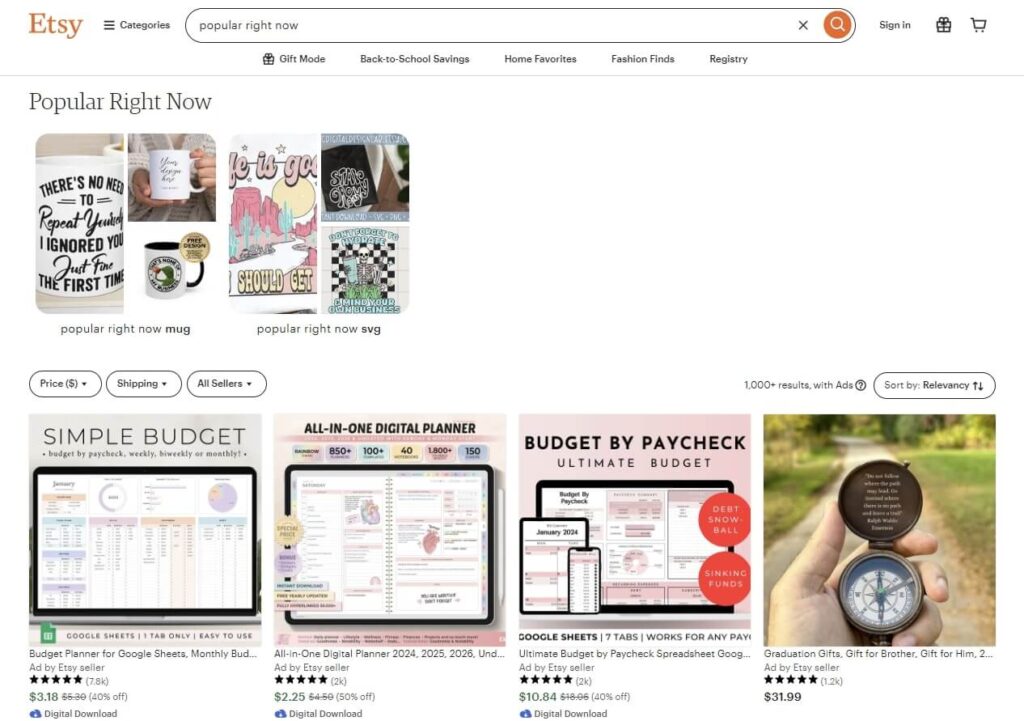
Etsy specializes in unique and handmade items. Check the “Popular Right Now” section.
Products that sell well on Etsy, like personalized gifts or custom-made items, can indicate niche markets. You might find an untapped audience on Amazon for these products.
Alibaba
Alibaba is a hub for wholesale items. Search for products with high ratings and large order volumes. This indicates a strong market demand. Look for items with lots of reviews.
This suggests a reliable product that can sell well if introduced to the Amazon market.
Tips for Cross-Referencing Demand
- Compare Listings: List items found on eBay, Etsy, and Alibaba. Check their presence on Amazon.
- Analyze Sales Data: Use tools like Product Opportunity Explorer to see demand trends.
- Check Keywords: Utilize keyword tools like Ahrefs Keyword Explorer to find search volumes and competition levels.
How to Use Product Research Tools to Find Amazon Products
Using product research tools can help you find profitable products to sell on Amazon. Here’s how to use some of the best tools available:
Keyword Research
Keyword research is a vital step in identifying profitable products to sell on Amazon. It involves finding search terms that potential buyers frequently use, which helps in tailoring your listings to match these searches.
Benefits
- Increased Visibility: Products that use popular keywords appear higher in search results.
- Better Targeting: Helps understand what customers are looking for.
Useful Tools for Keyword Research
- Ecommerce Keyword Analytics
- How to Use: Enter a broad term related to your product and analyze the most popular keywords.
- Benefits: Provides keyword data across various online retailers.
- Google Keyword Planner
- How to Use: Enter keywords to get search volume and related phrases.
- Benefits: Offers detailed data based on Google’s extensive search engine.
- Amazon Autocomplete
- How to Use: Type keywords into Amazon’s search bar and note the suggestions.
- Benefits: Reflects real-time search behavior.
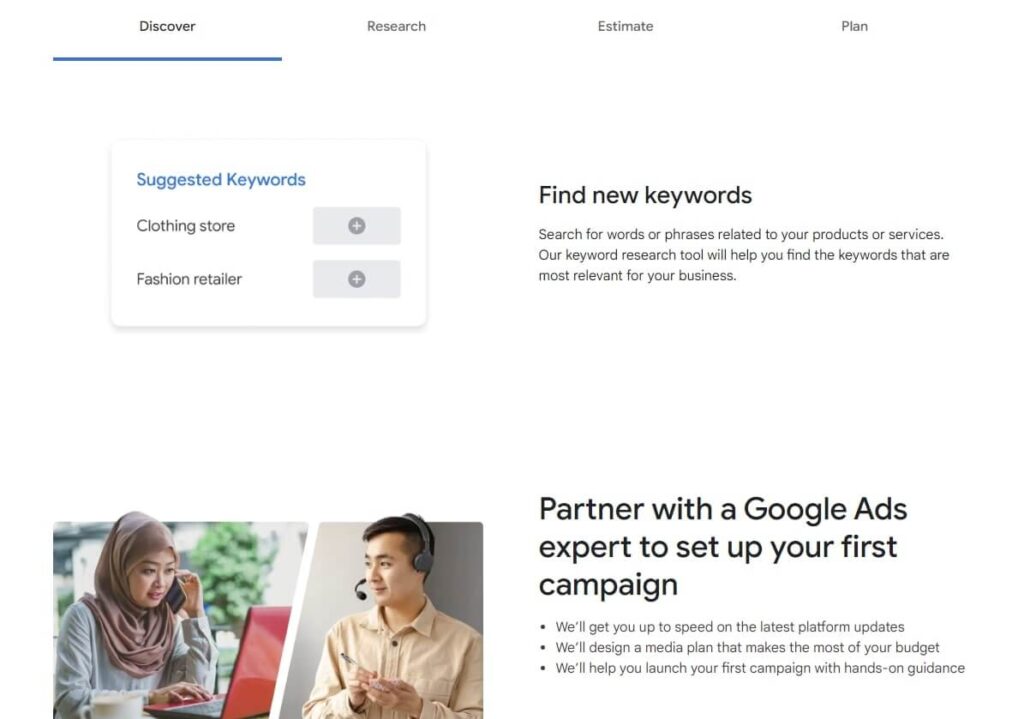
Tips for Effective Keyword Research
1. Focus on Relevance: Choose keywords that are directly related to your product category.
2. Analyze Competitors: Look at top products in your category and examine their keywords.
3. Use Long-Tail Keywords: Long-tail keywords are specific phrases with lower competition and highly targeted traffic.
Using these tools and strategies, you can perform detailed keyword research that can significantly enhance your product’s online presence. By understanding what your customers are searching for, you can optimize your listings effectively.
Product Research
Finding the right products to sell on Amazon requires diligent product research. This involves using specialized tools and analyzing key metrics.
Tools like Product Opportunity Explorer provide data on customer search patterns and niche demand. The tool updates weekly, which helps you stay current with market trends.
When conducting product research, consider these essential metrics:
- Sales Volume: Look for products that make at least 10 sales a day. This indicates steady demand.
- Competition: Identify niches with lower competition to increase your chances of ranking higher.
- Price Trends: Choose products within a profitable price range, typically between $10 and $50.
To get started, follow these steps:
- Use Amazon’s Best Seller Page: This page lists top-selling products in each category. It’s a great starting point for identifying what shoppers are buying.
- Utilize tools like AMZScout PRO: This tool allows you to calculate profits by entering the product price and costs. Review fees, net margin, and estimated monthly profit.
- Analyze keywords: Use tools like Ahrefs Keyword Explorer to find low-competition keywords that trigger product ads. This helps drive traffic to your listings.
Following these steps, you can systematically identify products with good sales potential and manageable competition. By staying informed of trends and using the right tools, you increase your chances of selecting winning products.
Category (Market) Research
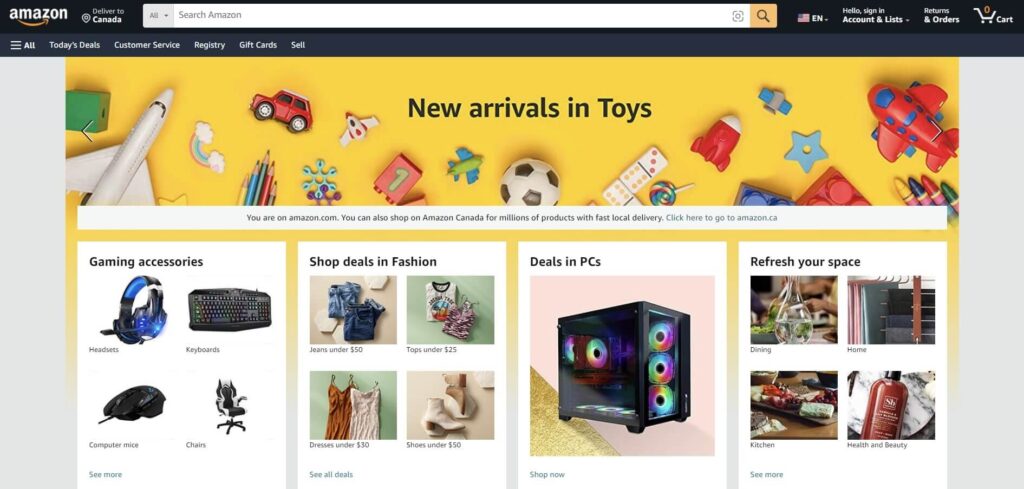
To find profitable products to sell on Amazon, start by analyzing the different product categories. Amazon has over 30 product categories. While most categories don’t require approval, some do. Make sure you understand these requirements.
Steps to Analyze Categories
- Identify Trends: Use tools like the Product Opportunity Explorer to identify trends in customer search patterns and product demand. Look for niches that refresh weekly to stay current with customer interests.
- Evaluate Demand: Analyze the sales rank and reviews in your chosen category. Categories with high-demand products often have many competing sellers,, which gained popularity through social media influencers.
- Use Research Tools: Software like AMZScout can help you analyze product metrics. For instance, the profit calculator in AMZScout lets you input product price, costs, and Amazon FBA fees to estimate monthly profit.
- Check Competition: Look for categories with unmet customer demand but lower competition. For example, using tools like Ahrefs Keyword Explorer, you can find low-competition keywords that trigger product ads on Google. This can help you drive traffic to your listings on Amazon.
Tips for Success:
- Stay Updated: Monitor weekly updates in your category to catch emerging trends early.
- Diversify: Consider multiple categories to spread risk and increase chances of finding a hit product.
- Read Industry Reports: Examine reports and insights to understand broader market trends and which categories show potential growth.
How to Analyze Amazon Competitor Reviews for Product Ideas
Analyzing competitor reviews on Amazon can provide valuable insights into product improvement opportunities. Start by researching top products in your niche.
- Identify Top Competitors: Use keywords related to your product to find top competitors. Tools like Jungle Scout can help.
- Collect Reviews: Gather reviews using tools like Product Opportunity Explorer. Focus on both positive and negative feedback.
- Analyze Positive Reviews: Look for common praises and strengths. This can help you understand what customers value most.
- Analyze Negative Reviews: Identify patterns in complaints. Common issues can highlight areas for improvement or new features.
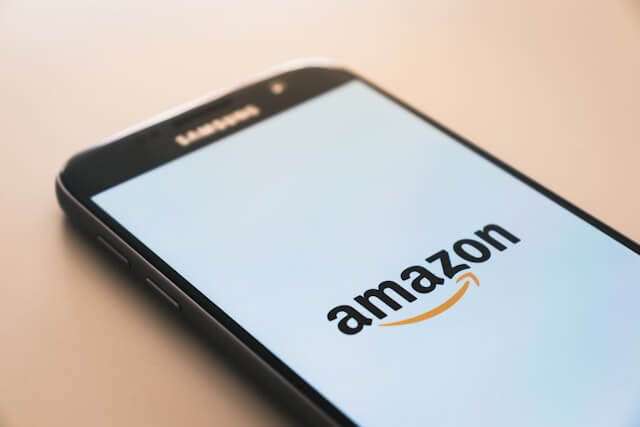
Key Points to Monitor:
- Quality Issues: Check for complaints about product durability, material, or build.
- Usability Concerns: Look for comments on ease of use or user experience problems.
- Feature Requests: Note any suggested features or enhancements.
- Customer Service Feedback: Pay attention to reviews mentioning customer service experiences.
Useful Tools for Review Analysis:
- AMZScout: Provides insights into sales history and competitor performance.
- SmartScout: Helps with identifying top products and keywords.
Features of the Best Products to Sell on Amazon
1. High Demand
When selling on Amazon, it’s crucial to choose products with high demand. High-demand products increase your chances of sales and profits.
Why High Demand Matters:
- Sales Volume: Products with high demand tend to sell quickly.
- Profit Potential: High sales volume often translates to higher profits.
- Market Validation: High-demand products are already popular, reducing the risk of stocking unwanted items.
High-demand products often fall into categories like electronics, home and kitchen, and beauty and personal care.
Keep your product choices updated by regularly checking online marketplaces and industry reports. This approach can help you maintain a competitive edge in the eCommerce space.
2. Low Competition
Selecting products with low competition is crucial for new sellers starting on Amazon. Competing in overcrowded niches can limit your sales potential and increase advertising costs.
Why Low Competition Matters
- Higher Visibility: Products with less competition have better chances of ranking higher in search results.
- Lower Advertising Costs: You spend less on ads to gain visibility.
- Better Profit Margins: Higher chances of selling without constant price wars.
Tips for Finding Low-Competition Niches
- Use Market Analysis Tools: Tools like Jungle Scout can help you identify niches with high demand and low competition.
- Research Customer Search Patterns: Tools like Product Opportunity Explorer give you insights into customer search trends, helping identify niches with unmet demand.
- Keyword Research: The Amazon Search Extractor from Botster allows you to export product lists based on searched keywords, showing you where the competition is sparse.

Examples of Low-Competition Products
Some products with typically low competition yet high demand include:
- Face masks
- Nail polish
- Hair care products
- Fitness items
- Yoga mats
- Water bottles
3. Reasonable Profit Margin (30%-50%)
Maintaining a healthy profit margin is crucial for your Amazon business. Aiming for a profit margin between 30%-50% helps you cover costs and earn a reasonable profit.
How to Calculate Profit Margin
To calculate your profit margin, use this formula:
Profit Margin (%) = [(Selling Price – Cost of Goods Sold) / Selling Price] * 100
For instance, if you sell an item for $40 and it costs you $20, your profit margin is:
Profit Margin = [(40 – 20) / 40] * 100 = 50%
Key Costs to Consider
- Product Cost: The price you pay to acquire the product.
- Amazon Fees: These include Fulfillment by Amazon (FBA) fees, referral fees, and storage fees. Use an Amazon FBA Profit Calculator to estimate these.
- Shipping Costs: Costs associated with shipping products to Amazon’s warehouses.
- Marketing Costs: Expenses for advertising on Amazon and other platforms.
Ensure your pricing covers these costs and gives you a profit margin within the 30%-50% range. Tools like Jungle Scout can assist in finding products that meet these criteria.
Example Calculation
If you want to sell a product for $25:
- Cost of Goods Sold (COGS): $10
- Amazon Fees: $5
- Shipping Costs: $2
Profit Margin = [(25 – (10 + 5 + 2)) / 25] * 100 = 32%
This approach ensures you cover all costs and still achieve a reasonable profit.
4. Sales Price Above $10
Choosing products with a sales price above $10 can greatly impact your Amazon business’s profitability. Products priced below $10 often struggle to cover fulfillment and logistics costs, making it difficult to maintain a positive profit margin.
Why It Matters:
- Cost Coverage: Selling items under $10 can lead to losses after fees.
- Perceived Value: Higher-priced items often convey better value and quality to customers.
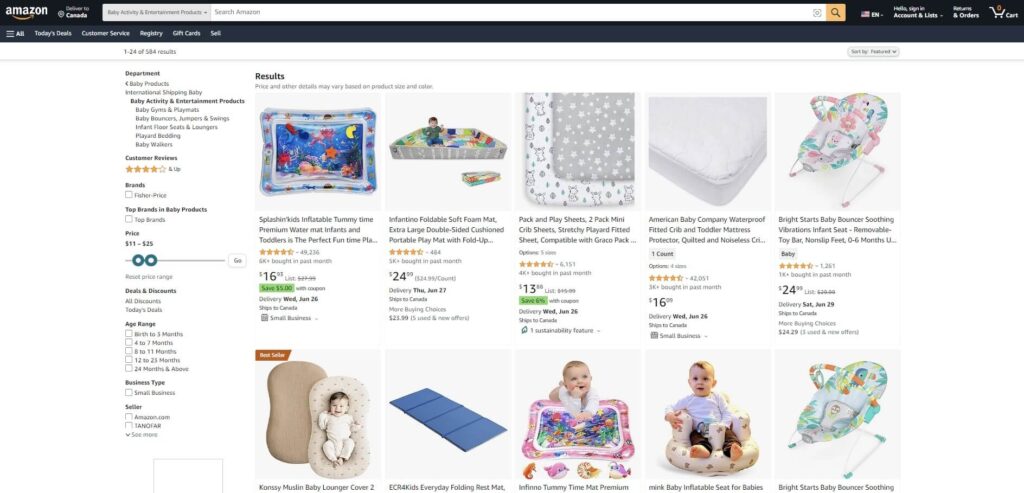
Pricing Strategies
1. Competitive Pricing: Monitor what similar products are selling for. Tools like Helium 10 can help analyze competitors’ pricing.
2. Cost-Plus Pricing: Calculate the cost to produce your product and add a markup. For instance, if it costs $4 to make, you might sell it for $15.
3. Value-Based Pricing: Set prices based on what your target market is willing to pay. This requires understanding your customers’ preferences and perceptions.
Market Insights
Research shows that products priced between $20-$50, tend to sell well. These products balance affordability with the ability to generate a solid profit margin.
Benefits of Higher Pricing
- Better Profits: Higher prices mean more revenue per unit sold.
- Customer Trust: A higher price often signals better quality, attracting discerning buyers.
- Marketing Flexibility: Increased margins allow for promotional offers and discounts without hurting profits.
5. Room for Improvement or Upgrades
Finding products to sell on Amazon is just the beginning. There is always room for improvement or upgrades to increase your sales and customer satisfaction. Enhancing your product can set you apart from the competition and may attract more buyers.
Potential Enhancements
- Quality Improvement: Ensure your product is made with high-quality materials. For example, if you sell kitchen gadgets, using stainless steel instead of plastic can make a significant difference.
- Bundling: Offer your product as part of a bundle. If you sell fitness equipment, consider bundling a yoga mat with resistance bands.
- Design Upgrades: Work on your product’s visual appeal. An attractive design can increase customer interest and satisfaction.
Examples of Product Enhancements
- A water bottle company added a built-in fruit infuser to its bottles, making them more appealing to health-conscious consumers.
- A phone case manufacturer incorporated a built-in stand and cardholder for added functionality.
Key Considerations
- Customer Feedback: Regularly check customer reviews and feedback. Use this information to make improvements.
- Market Research: Tools like Jungle Scout and Helium 10 can help you identify trends and potential upgrades for your products.

6. No Infringement
Avoiding intellectual property infringement is critical when selling on Amazon. Infringing on trademarks, copyrights, or patents can lead to account suspension or legal action. Thus, it’s essential to ensure your products don’t violate any rights.
Tips to Avoid Infringement
- Conduct a Patent Search: Thoroughly research patents related to your product. Utilize tools like Google Patents or USPTO’s search tool.
- Check for Trademarks: Visit the USPTO’s Trademark Database to ensure your product name and logo don’t infringe on registered trademarks.
- Review Copyrights: Make sure any content, such as images and text, is original or properly licensed.
Amazon’s Policy Highlights
- Sellers must comply with Amazon’s Intellectual Property Policy.
- Items listed must not violate trademarks, copyrights, or patents.
- Be wary of Amazon Brand Registry which helps protect registered trademarks on Amazon.
Proactive Steps
- Consult Legal Professionals: Whenever in doubt, seek advice from an IP lawyer.
- Use Reliable Tools: Platforms like Product Opportunity Explorer can provide data but ensure legal checks are conducted.
Extra Tips for Due Diligence
- Monitor Listings: Regularly review your listings and any new products for potential infringements.
- Stay Updated: IP laws and Amazon’s policies can change, so stay informed.
7. Easy to Transport
Choosing products that are easy to transport can simplify your business. Lightweight and compact items reduce shipping costs and logistical hassles.
Benefits of Easy-to-Transport Products
- Lower Shipping Costs: Smaller and lighter packages generally cost less to ship. Use a shipping cost calculator to estimate expenses.
- Simplified Storage: Compact products take up less warehouse space, allowing for efficient inventory management.
- Faster Handling: Easy-to-transport items require less time to pack, speeding up order fulfillment.
Factors to Consider
- Size: Keep dimensions small. This not only reduces shipping costs but also avoids extra fees for oversized packages.
- Weight: Lighter items help save on shipping. Products under 1 lb are ideal for cost efficiency.
- Packaging: Ensure products are easy to pack securely. Simple packaging materials that prevent damage are a good choice.

Examples of Easy-to-Transport Products
- Electronics: Headphones, chargers, and small gadgets
- Books: Paperbacks and small hardcovers
- Toys: Action figures and puzzles
Useful Tools
- Logistics Guides: Refer to comprehensive logistics guides to understand how size and weight impact your costs and strategies.
- Shipping Cost Calculators: Use tools available on official Amazon selling resources to get accurate shipping estimates.
8. Not Fragile or Easy to Break
Choosing products that are not fragile or easy to break can save you many headaches in shipping and handling.
Durable items reduce the risk of damage during transit and storage, leading to fewer returns and happier customers. This can save both time and money, improving your profit margins.
Advantages of Non-Fragile Products
- Lower Shipping Costs: Less protective packaging is needed.
- Reduced Returns: Fewer items arrive damaged.
- Simpler Storage: No need for special handling.
Examples of Durable Products
- Books & Textbooks: These are rarely damaged in shipping.
- Clothing: Generally durable and easy to pack.
- Kitchen Utensils: Items like spatulas and mixing bowls handle well.
Tips for Identifying Non-Fragile Products
- Use tools like Helium 10 and Jungle Scout for data on product durability.
- Check reviews for mentions of product breakage.
- Opt for materials known for strength, such as stainless steel or hard plastic.
Handling and Shipping Guides
Review Amazon’s fragile inventory guide to understand how much care fragile items need. Non-fragile items often bypass many of these intensive handling requirements, making your fulfillment process smoother.
Selecting non-fragile products can significantly streamline operations. By focusing on items less likely to break, you ensure a safer delivery, reducing the burden on your customer service team.
9. Long Shelf Life
Choosing products with a long shelf life is crucial when selling on Amazon. Items with extended expiration dates are less likely to spoil, reducing the risk of loss and increasing profit margins.
Additionally, these products can be stored for extended periods without degradation.

Key Considerations
- Expiration Dates: Ensure products have a significant amount of time before reaching their expiration date. For example, avoid items that expire within three months to provide ample selling time.
- Storage Requirements: Some products require specific storage conditions, such as temperature and humidity controls, to maintain their shelf life and quality.
Examples of Long Shelf Life Products
| Category | Examples |
| Canned Goods | Soups, Vegetables |
| Dry Foods | Pasta, Rice, Cereal |
| Personal Care | Soap, Shampoo |
| Household Items | Detergents, Cleaners |
Inventory Management
Efficient inventory management for long shelf life products helps minimize waste. Resources like the FBA Seller’s Guide to Amazon Expiration Dates outline Amazon’s rules on expiration dates.
Products sold via FBA must have a minimum remaining shelf life of over 90 days.
Using inventory management software can help track product expiration dates, ensuring older stock is prioritized for sale. Accurate tracking systems can also assist in maintaining optimal stock levels.
Benefits
- Reduced Waste: Less spoilage and discard.
- Flexibility: More time to sell products.
- Cost Savings: Lower frequency of new inventory purchases.
10. No Violation of the Law or Amazon’s Policies
When selling on Amazon, it’s crucial to adhere to both legal regulations and Amazon’s policies. Non-compliance can lead to hefty fines or account suspension.
Importance of Compliance
Compliance ensures a smooth business operation. Legal violations can result in severe penalties, while Amazon’s policies help maintain a trustworthy marketplace.
Researching Product Regulations
- Identify Restrictions: Some products are prohibited, including prescription drugs, weapons, and expired items. Check Amazon’s Restricted Products Policy for details.
- Consult Legal Resources: Refer to official legal resources or websites like the FDA for health-related products and CPSC for consumer goods.
- Amazon Guidelines: Always review Amazon’s product policy compliance guide for the latest updates.
Tips for Compliance
- Product Labeling: Ensure that all products are correctly labeled following legal requirements. This includes ingredients, safety warnings, and manufacturing details.
- Documentation: Keep records of supplier invoices and certificates. If Amazon requests proof of compliance, these documents will be crucial.
- Regular Audits: Periodically review your listings to ensure they remain compliant with Amazon’s policies and legal standards.
Practical Steps
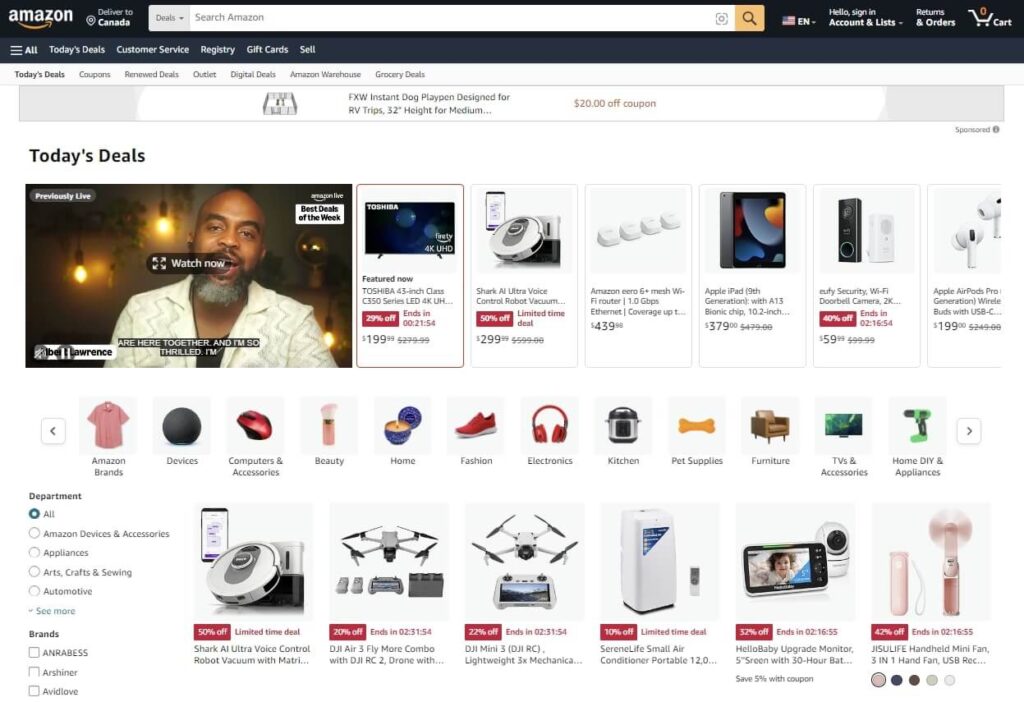
- Review Violations: Thoroughly understand the root cause of any policy violations. Refer to Amazon’s detail-oriented guides on resolving these issues.
- Submit POA: If a violation occurs, prepare a Plan of Action (POA) and submit it with necessary documents.
- Monitor Account Health: Keep an eye on your account health dashboard to spot and address violations promptly. Regular attention helps in preventing issues before they escalate.
By diligently following these guidelines, you can ensure your Amazon business operates smoothly and avoid any disruptions caused by policy violations.
11. No Monopoly Markets
Entering a market dominated by a few major players can be risky. In such markets, competition is fierce, and the dominant companies often control most of the sales and customer base.
Tips to Identify Monopolistic Markets:
- Research Market Share: Look for industry reports that show the market share of top companies. If one or two companies hold more than 50% of the market, consider it monopolistic.
- Check Customer Reviews: If most customer feedback references the same brands repeatedly, it might signal a monopoly.
- Use Tools: Leverage tools like Product Opportunity Explorer to identify niches with unmet demand and less competition.
Markets with monopolies can have high barriers to entry. Dominant companies might have better economies of scale, vast marketing budgets, and established customer loyalty. Entering such markets may require significant investment and innovation.
Smaller sellers might find it challenging to compete on price or visibility. Even if a niche appears profitable, consider the sustainability and your ability to capture and grow market share.
Focusing on niches with diverse competition can be more rewarding. Look for markets where newer brands can carve out a presence and where customer needs are evolving. Choose markets that offer space for innovative products and new ideas.
12. Evergreen Instead of Seasonal

When choosing products to sell on Amazon, focus on evergreen products. These items are consistently in demand throughout the year, unlike seasonal products that only sell during specific times.
Benefits of Selling Evergreen Products
- Consistent Revenue: These items provide a steady income stream. You won’t face drastic sales drops that often occur with seasonal items.
- Reduced Risk: Predictable demand decreases the likelihood of unsold inventory.
- Easier Inventory Management: Consistent sales patterns allow for better inventory forecasting and management.
Examples of Evergreen Product Categories
- Health and Wellness: Items like vitamins and fitness equipment maintain steady demand.
- Personal Hygiene: Products such as toothpaste and shampoos are always needed.
- Basic Fashion Apparel: Essential clothing items, like t-shirts and jeans, sell year-round.
- Home Essentials: Items like kitchen gadgets and cleaning supplies.
Studies show that evergreen products have a steady demand regardless of seasonality. For example, in 2023, the global market for personal hygiene products grew by 5%, indicating a stable market.
By focusing on these products, you align your business with consistent consumer behavior.
Adopting an evergreen strategy helps in creating a reliable and sustainable e-commerce business, offering you a more stable and manageable sales pipeline.
13. Recurring and Repeat Purchases
When selling on Amazon, you should seek out products that encourage repeat purchases. These items ensure a steady stream of revenue because customers need to buy them repeatedly.
Advantages of Repeat Purchases
- Steady Revenue Stream: Products like shampoo or vitamins bring continuous sales.
- Customer Loyalty: Consumers often stick with a brand they trust, leading to consistent business.
- Lower Marketing Costs: It is generally cheaper to retain existing customers than to find new ones.
Examples of Consumable Products
Consumable products are excellent choices for repeat purchases. Items like wet wipes or pet food are used regularly and need frequent restocking.
Subscription-Based Products
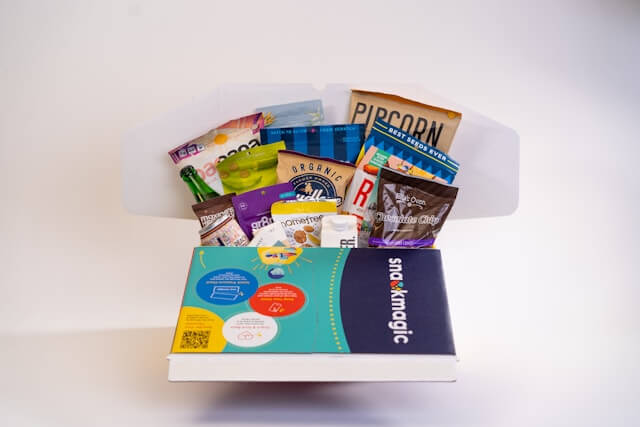
Subscriptions are another effective way to guarantee repeat purchases. Consider offering things like razor blade subscriptions or monthly snack boxes. These provide convenience for the customer and predictability for your business.
Consumer Loyalty Studies
According to a study by Reason Automation, increasing customer retention by 5% can boost profits by 25% to 95%. This showcases the importance of focusing on products that promote repeat business.
By focusing on products that customers need to buy repeatedly, you can build a more sustainable and profitable business on Amazon. Engage with products that ensure your customers keep coming back for more.
Frequently Asked Questions
Discovering the key to finding products to sell on Amazon involves understanding effective sourcing methods, using free research tools, and selecting the right products for beginners.
Below are some common questions and straightforward answers to help you navigate this journey.
Is It Really Worth It to Sell on Amazon?
Selling on Amazon offers both opportunities and challenges. On average, successful Amazon sellers earn between $1,000 to $25,000 per month in sales.
According to Amazon’s seller reports, many achieve profitability within the first year. However, competition can be fierce, and fees need careful consideration.
Where to Buy Items to Resell on Amazon?
Sourcing products effectively is crucial. Websites like Alibaba and Global Sources are popular for connecting with manufacturers.
Additionally, attending trade shows can provide valuable direct contacts. Many resellers also source products from wholesalers and other retailers.
Utilizing sourcing guides and e-commerce blogs can offer detailed tips and strategies.
How to Find Best Selling Products on Amazon for Free?
You can discover best-selling products on Amazon without using paid tools by exploring Best Sellers, Movers & Shakers, and New Releases pages.
These pages are updated frequently and reflect current shopping trends. Using Amazon’s official resources and free research tools can provide a good starting point.
What Are the Best Products to Sell on Amazon for Beginners?
For beginners, low-risk and high-demand items are ideal. Categories such as home and kitchen products, beauty and personal care, and pet supplies are often beginner-friendly.
These items are usually easier to source and have consistent demand.
How to Get Products to Sell on Amazon?
There are various methods to source products. Wholesale involves buying in bulk from suppliers. Private label allows you to brand existing products. Dropshipping enables selling without holding inventory. Liquidation involves purchasing clearance stock.
Each method has its pros and cons, and understanding these can guide your choice. Consulting sourcing guides and industry publications can provide further insights.
Summing Up: Key Insights on How to Find Products to Sell on Amazon
Researching high-demand products is vital. Use tools like Amazon’s Product Opportunity Explorer to uncover profitable niches. This tool updates weekly, helping you spot trends in customer search patterns and demand.
Leverage the Amazon Best Sellers list to identify popular products. This list highlights what’s trending, making it easier to find items that appeal to consumers.
Conduct Keyword analysis effectively. Tools like Ahrefs Keyword Explorer help you find low-competition keywords. Targeting these keywords improves your product’s visibility and drives traffic to your listings.
Explore multiple sources, analyze trends, and test product ideas through small batches to minimize risks and maximize opportunities. Avoid selecting products based solely on personal preference; base decisions on solid data.
And if all of these seem overwhelming,opt to source quality products from China and have them shipped directly to Amazon FBA warehouses.
Request a sourcing quote today and start your successful Amazon business!
